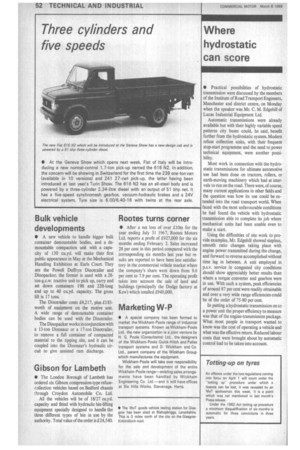Where hydrostatic can score
Page 54

If you've noticed an error in this article please click here to report it so we can fix it.
• Practical possibilities of hydrostatic transmission were discussed by the members of the Institute of Road Transport Engineers, Manchester and district centre, on Monday when the speaker was Mr. C. M. Edgehill of Lucas Industrial Equipment Ltd.
Automatic transmissions were already available but with their highly variable speed patterns city buses could, he said, benefit further from the hydrostatic system. Modern refuse collection units, with their frequent stop-start programme and the need to power technical equipment, were another possibility.
Most work in connection with the hydrostatic transmissions for ultimate automotive use had been done on tractors, rollers, or earth-moving machinery which had at intervals to run on the road. There were, of course, many current applications in other fields and the question was how its use could be extended into the road transport world. When faced with the most unfavourable conditions he had found the vehicle with hydrostatic transmission able to complete its job where mechanical units had been unable even to make a start.
Using the difficulties of site work to provide examples, Mr. Edgehill showed stepless, smooth ratio changes taking place with engine power transmitted during the change, and forward to reverse accomplished without time lag in between. A unit employed in p.s.v. service in congested city conditions should show appreciably better results than where a torque converter and gearbox were in use. With such a system, peak efficiencies of around 87 per cent were readily obtainable and over a very wide range efficiencies could be of the order of 75-80 per cent.
In putting a hydrostatic transmission onto a power unit the proper efficiency to measure was that of the engine-transmission package. What most people in transport wanted to know was the cost of operating a vehicle and what was the effective return. Reduced labour costs that were brought about by automatic control had to be taken into account.




































































































































